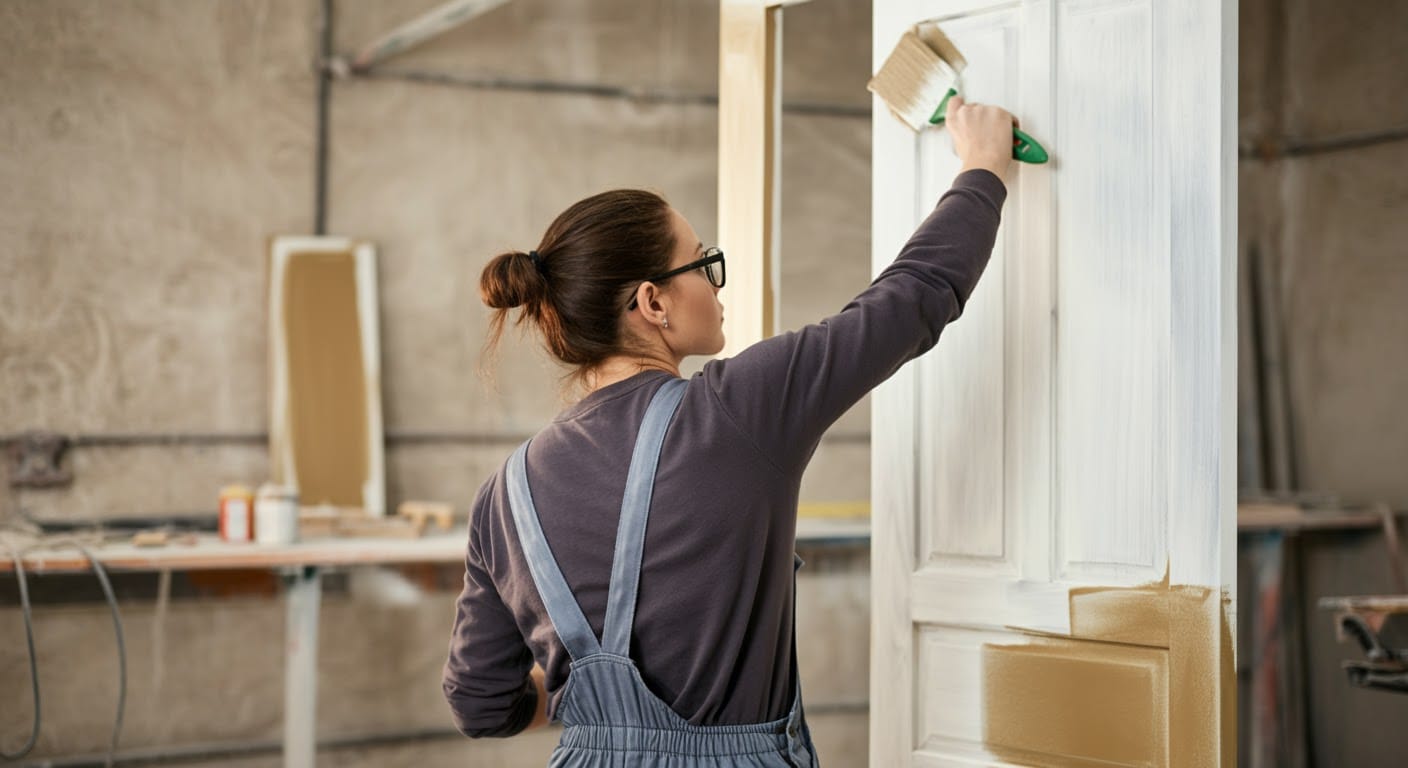
To prevent issues such as swelling and sticking, effective humidity control for wood doors is crucial, especially for interior wood doors. Humidity can cause wood to absorb moisture, leading to expansion and deformation that affects the door’s functionality and appearance.
Maintaining a consistent indoor climate helps mitigate these issues. Ensure that areas prone to high moisture, like kitchens and bathrooms, are well-ventilated to reduce humidity levels. Using a dehumidifier and keeping the temperature steady with a programmable thermostat can further control indoor humidity.
By managing these factors, you can preserve the integrity and performance of your interior wood doors for years to come. Let’s dive deeper into these tips so you can more easily keep your wood doors from swelling!
Seal Your Door
The leading cause of wood swelling is humidity. Moisture in the air gets absorbed by the cellular structure of the wood, causing it to expand unpredictably. In some cases, it may swell horizontally, and in others, it may swell vertically.
The easiest way to deal with humidity is to prevent the door from absorbing moisture by using a high-quality sealant. To be clear, we aren’t talking about weather stripping foam around the edges—though that can also prevent humidity from entering your home.
High-quality sealants, such as polyurethane and marine sealants, can provide a moisture-free barrier between your door and the environment. Consult with a professional to determine the type of sealant best suited for your door and the environment in which you live.
Control Your Indoor Climate
The inside of your home shouldn’t feel like a tropical jungle. High humidity indoors is often caused by poor ventilation in high-humidity areas, like bathrooms and kitchens. By ensuring these areas are properly ventilated, homeowners can reduce humidity.
Furthermore, maintaining a steady temperature in your home will help reduce condensation and heat swelling. Air conditioners help keep indoor humidity under control, and by keeping the temperature within a range of eight or ten degrees Fahrenheit, you can reduce condensation from forming. This is easy to do with a programmable thermostat that will turn on your AC or heater often enough to maintain a steady temperature, even when you are out of the house.
An Ounce of Prevention
Doors that face the sun are prone to weathering much faster than other doors–all the polyurethane in the world isn’t going to stand up to ten years of UV exposure. Like any wooden structure, these doors need proper care and maintenance. This means occasionally inspecting the seals, looking for signs of chipped paint or sealant, and identifying the moment a door starts to become deformed. Once a problem has been identified, indoor dehumidifiers and resealing can prevent the issue from getting worse.
If a door has swelled and you cannot get it to shrink back to size, the door frame may have also swelled or shifted. Environments with extreme hot-cold or wet-dry cycles can cause houses to shift, and nowhere is that more evident than a door. Adjusting door hinges is one way you can keep a wood door from sticking. Alternatively, you can sand the edges where the door gets stuck.
Engineered Wood That Resists Swelling
Made of engineered wood with real wood veneers, the doors at 27EStore manufacture stand up to the harshest conditions. Whether it’s a home in the sweltering south of Georgia or a bathroom door that’s been abused by teenagers, our doors will stand up to whatever you can throw at them.
Browse our full selection and see how much an interior wood door costs–compared with other high quality door manufacturers, the answer might surprise you!
